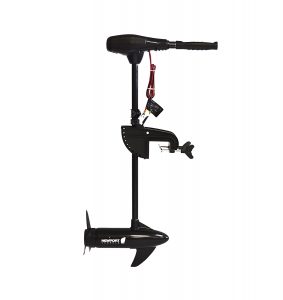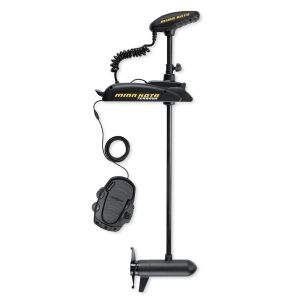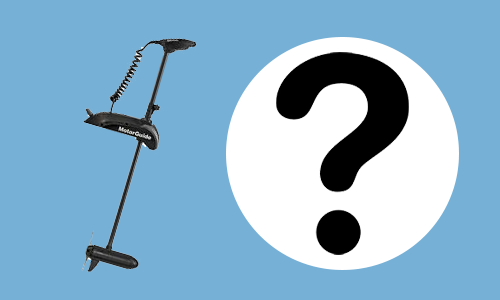Shaft Length for Pontoon Trolling Motors
Most of us like cruising amidst our familiar waters on a pleasant day. An enjoyable experience is determined not only by the horsepower of the motor, but also a correct adjustment of your trolling shaft length.
The shaft length is truly a decisive aspect of fishermen’s ship. Selecting the right length may depend on your necessities, but the most common for pontoon boats is around 60”. You could go also shorter, somewhere down to 54”, but that would be the lowest recommended limit, especially if you still don’t know the appropriate dimension you need for your boat.
Choosing the right length would ensure the propeller submerged in different environmental conditions, as it will avoid the undesired cavitation, which would scare all the fish around. Depending on the waters you and your boat are in, you should be very careful which length would be the best for you.
 You could think that a shorter one could be right for you, but it’s a fact that many fishermen want to switch to a longer shaft instead of keeping their short one. Generally, some could be satisfied with, for example, a 48” shaft. But think of the area where do you plan to cruise – and, most importantly, how are the conditions there? It is less common
You could think that a shorter one could be right for you, but it’s a fact that many fishermen want to switch to a longer shaft instead of keeping their short one. Generally, some could be satisfied with, for example, a 48” shaft. But think of the area where do you plan to cruise – and, most importantly, how are the conditions there? It is less common
that
going too long could cause a more troublesome situation than going too short. So, it would be good remembering that if you have to choose between more lengths, better go with the longer one. If you somehow picked up one which is a little bit longer than you need, you could adjust the shaft depth upward with the collar adjustment depth, which should be practical on almost all motors.
If you are cruising mostly amidst the cities’ arms of the river and small local lakes, then it may be enough to stay with a short shaft. The weather is also an important criterion, as if you experience mostly abundant waves, the short shaft won’t be able to hold your boat properly. Without a doubt, you could have more advantages by mounting a 48” shaft, like the Minn Kota Powerdrive V2, than a 60”, like the White Haswing Cayman, but it depends on your usual environment. However, you should also take into consideration your type of boat, as some could not possibly originally support shorter shaft mounting. You should be also very careful about making the right calculations, in order to be sure that grounding won’t damage the boat.
One thing that you would want to make sure of would be mounting the shaft in the best location of your boat. Some boats have special prearranged space on the bow in the front of the fencing for longer shafts, but for other ones, it could be quite troublesome to have one mounted there, and the boat may be more fulfilling with their shaft in another spot. It should be taken into consideration that the trolling shaft should be mounted next to your motor and, whichever place you choose, it should fit your purpose perfectly.
A good idea could also be to mount it in the rear of the boat or, also, right on your main motor. The most common approach is mounting the trolling shaft on the bow, but it really depends on some aspects. If you choose to mount in on the bow, make sure your boat is compatible with this approach. The front is the highest spot, so you will probably need to remake the frontal gate to the needed size. This may involve a lot of rough work, but it could be a must if you want to avoid any inconveniences in the future. It is also the most inexpensive and common method of preparing the spot for your shaft. So, mounting your shaft on the bow of the motor could be a troublesome process after all, but comes with a rewarding price. Therefore, if you want to place it in the front, you should make the corresponding adjustments.
 A good approach to selecting the right trolling shaft length of your pontoon boat would be to measure the position of your motor down to the water. In other words, to get the length more precisely, get it from the bottom of the head right down to the top of the propeller housing. Afterwards, depending on the structure of your boat, add 20’ to get the needed length. You should be very careful in measuring this length, as this size has to be very precise in order to fit your needs. If you choose, say, a several inches longer one, it could stick above the boat’s front or, on the contrary, be damaged by the grounding. However, a positive point is that these lengths are often indicated on the boxes of the products, so there is no need for worry.
A good approach to selecting the right trolling shaft length of your pontoon boat would be to measure the position of your motor down to the water. In other words, to get the length more precisely, get it from the bottom of the head right down to the top of the propeller housing. Afterwards, depending on the structure of your boat, add 20’ to get the needed length. You should be very careful in measuring this length, as this size has to be very precise in order to fit your needs. If you choose, say, a several inches longer one, it could stick above the boat’s front or, on the contrary, be damaged by the grounding. However, a positive point is that these lengths are often indicated on the boxes of the products, so there is no need for worry.
Depending on your preferred style, there is some choice to be made. If you don’t want to go through some rough work, which could involve cutting and reshaping your front gate, then a short trolling shaft could be the right option for you. However, regarding the mentioned factors, you may want to get more in thought what you really need and if you are ready to invest the required time in it.
The trolling shafts of pontoon boats differ from boat to boat, as they may need some individual approach. Remembering the key aspects should ensure you a comfortable sailing, while not worrying about further inconveniences. Let’s quickly review the most decisive aspects in order to choose the right trolling shaft length:
- The type of your boat and water conditions would be the most important ones. You surely don’t want to get any damage with a shaft too long or make the fish leave trails behind your boat.
- Mounting it in the front would be a classic approach, but depending on your needs and also type of waves you usually experience, you may want to get a shorter one to also spare some time and not undergo any useless remakes.
- Just remember that, in order to measure the right size of the future trolling shaft, you have to measure the distance between where the motor is located and where the water starts. After that, just add about 20’ (+/-2’) and you should have your measure.
Keeping these things in mind should bring you to the needed result and get you nearer to the perfect shaft length your boat may need.

